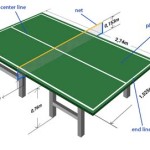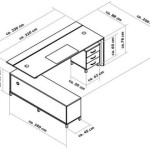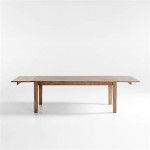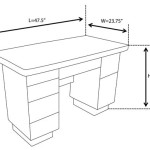Vegetable Garden Trellis Designs: Form and Function for Optimal Growth
Trellises are indispensable structures in vegetable gardens, offering support for climbing plants, maximizing space utilization, and enhancing overall aesthetics. They are more than just functional elements; they can significantly influence a plant's health, yield, and susceptibility to disease. Choosing the right trellis design depends on various factors, including the type of vegetable being grown, the available space, the desired aesthetic, and the gardener's construction skills. This article explores various vegetable garden trellis designs, considering their advantages, disadvantages, and suitability for different plant species and garden settings.
Traditional gardening methods often rely on ground-based cultivation, which can be inefficient, leading to overcrowding, increased susceptibility to pests and diseases, and reduced sunlight exposure to lower leaves. Trellises mitigate these issues by providing vertical support, lifting foliage off the ground, which promotes air circulation and reduces moisture-related problems. Furthermore, trellised plants often produce cleaner, more uniform fruits as they are less likely to come into contact with soil, minimizing the risk of rot or pest infestations.
From a design perspective, trellises can transform a vegetable garden into a visually appealing space. They can serve as focal points, create boundaries, and add height and dimension to otherwise flat plantings. The integration of different trellis designs can introduce an element of artistry to the garden, blending functional needs with aesthetic preferences. The choice of materials, construction techniques, and plant combinations can create unique and visually striking displays.
Understanding the Benefits of Trellising Vegetables
Trellising offers a multitude of benefits that extend beyond mere support. These benefits positively impact plant health, yield, and garden management, making trellising a valuable technique for both novice and experienced gardeners.
One of the most significant advantages is improved air circulation. By elevating foliage away from the ground, trellises facilitate airflow around the plants, reducing the humidity that fosters fungal diseases such as powdery mildew and blight. This increased airflow also allows for more efficient drying of leaves after rain or irrigation, further minimizing the risk of disease outbreaks.
Increased sunlight exposure is another crucial benefit. When plants are allowed to sprawl on the ground, the lower leaves often become shaded, inhibiting photosynthesis and reducing overall plant vigor. Trellises allow for even distribution of sunlight throughout the plant, maximizing photosynthetic activity and promoting robust growth. This is especially important for fruiting vegetables, as adequate sunlight is essential for fruit development and ripening.
Trellising can also lead to increased yields. By optimizing sunlight exposure and air circulation, trellises create a more favorable environment for plant growth, resulting in higher fruit production. Furthermore, the vertical orientation of trellised plants allows for denser planting configurations, maximizing the use of available space. This is particularly beneficial in small gardens where space is a limiting factor.
Another often overlooked benefit is pest management. Ground-dwelling pests such as slugs and snails are less likely to reach trellised plants, reducing the need for pesticides. The increased visibility of trellised plants also makes it easier to detect and address pest infestations early on, before they become widespread. Hand-picking pests becomes simpler, reducing reliance on chemical controls and promoting a more sustainable gardening approach.
Trellising also simplifies harvesting. Fruits are more accessible and easier to reach when plants are grown vertically, minimizing bending and straining during harvest. This can be particularly beneficial for gardeners with mobility limitations. Cleanliness of the harvested produce is also enhanced, as fruits are less likely to come into contact with soil and debris.
Exploring Different Trellis Designs
The variety of trellis designs available allows gardeners to choose structures that best suit their specific needs and aesthetic preferences. Each design has its own strengths and weaknesses, and the selection process should consider the plant type, garden layout, and available resources.
A-Frame Trellises: A-frame trellises are self-supporting structures that resemble the letter "A." They typically consist of two lattice panels or wire mesh connected at the top, forming a sturdy triangular shape. A-frame trellises are ideal for supporting heavy crops like cucumbers, beans, and melons. The angled sides provide ample surface area for plants to climb, and the open design allows for good air circulation. These trellises are relatively easy to construct using basic materials such as lumber and hardware cloth.
Arched Trellises: Arched trellises add a touch of elegance to the garden while providing support for climbing plants. They can be constructed from various materials, including metal, wood, or bamboo. Arched trellises are often used to create pathways or entryways, adding visual interest and defining garden spaces. They are suitable for supporting vining vegetables like grapes, climbing roses (if integrated with vegetable gardening), and certain types of squash. The graceful curve of the arch provides a unique growing surface and enhances the overall aesthetic appeal of the garden.
T-Post Trellises: T-post trellises are a simple and cost-effective option for supporting lightweight climbing plants. They consist of metal T-posts driven into the ground with wire or twine strung between them to create a climbing surface. T-post trellises are well-suited for supporting peas, beans, and tomatoes (although the tomato trellis needs to be robust). They are easy to install and require minimal construction skills. The modular design allows for easy expansion and customization to fit different garden layouts.
Netting Trellises: Netting trellises are a lightweight and versatile option for supporting a wide range of climbing vegetables. They typically consist of nylon or plastic netting stretched between posts or attached to a frame. Netting trellises are ideal for supporting beans, peas, cucumbers, and squash. The open mesh design allows for good air circulation and sunlight penetration. Netting trellises are relatively inexpensive and easy to install, making them a popular choice for both novice and experienced gardeners.
Bamboo Trellises: Bamboo trellises offer a natural and sustainable option for supporting climbing plants. Bamboo is a strong and renewable resource that can be used to create a variety of trellis designs. Bamboo trellises are often used to support beans, peas, cucumbers, and other lightweight climbing vegetables. The natural aesthetic of bamboo blends well with garden environments, adding a touch of rustic charm. Bamboo trellises can be constructed using various techniques, from simple A-frames to more elaborate woven designs.
Pallet Trellises: Repurposed pallets can be transformed into functional and aesthetically pleasing trellises. Pallet trellises are a sustainable option that utilizes recycled materials. They can be used to support a variety of climbing vegetables, including beans, peas, cucumbers, and squash. Pallets can be modified to create different trellis designs, such as vertical panels, A-frames, or even raised garden beds with integrated trellises. The rustic appearance of pallet trellises adds a unique character to the garden.
Materials and Construction Techniques
The choice of materials and construction techniques significantly impacts the durability, aesthetics, and functionality of a vegetable garden trellis. Selecting the appropriate materials and employing sound construction practices ensures that the trellis can withstand the elements and provide adequate support for climbing plants over an extended period.
Wood: Wood is a classic and versatile material for trellis construction. It offers a natural aesthetic and can be easily shaped and assembled. Cedar, redwood, and pressure-treated lumber are popular choices due to their resistance to rot and decay. When using wood, it is essential to use stainless steel or galvanized fasteners to prevent corrosion. Regular staining or painting can further protect the wood from the elements and extend its lifespan. Wooden trellises can be constructed using various techniques, including mortise and tenon joints, screw joints, and nail joints.
Metal: Metal offers strength, durability, and a modern aesthetic for trellis construction. Steel, aluminum, and wrought iron are commonly used metals for trellises. Steel is the strongest but is susceptible to rust and requires painting or powder coating for protection. Aluminum is lightweight and rust-resistant but may not be as strong as steel. Wrought iron is a traditional material that offers an elegant look but can be expensive and may require regular maintenance to prevent rust. Metal trellises can be constructed using welding, bolting, or riveting techniques.
Bamboo: Bamboo is a sustainable and renewable material that offers a natural and rustic aesthetic for trellis construction. It is lightweight, strong, and relatively inexpensive. Bamboo trellises can be constructed using various techniques, including lashing, tying, and doweling. Regular treatment with a preservative can help to protect the bamboo from insects and decay. Bamboo trellises are well-suited for supporting lightweight climbing plants such as beans, peas, and cucumbers.
Plastic: Plastic offers a lightweight, durable, and low-maintenance option for trellis construction. Plastic trellises are resistant to rot, decay, and insects. They are also relatively inexpensive and easy to assemble. However, plastic trellises may not be as aesthetically pleasing as wooden or metal trellises. They can be used to support a variety of climbing plants, especially when strength is less of a factor. They are often used to create netting supports rather than structural components.
Construction Techniques: Proper construction techniques are essential for creating a durable and functional trellis. When constructing wooden trellises, it is important to use strong joints and secure fasteners. Mortise and tenon joints are a traditional and reliable option for creating strong connections. Screw joints and nail joints are easier to construct but may not be as strong. When constructing metal trellises, welding is the preferred method for creating strong and permanent connections. Bolting and riveting can also be used to create strong connections, but these methods may require more maintenance over time. The key is to choose fasteners that are appropriate for the chosen materials and construction method.

Trellis Diy Garden Vegetable

24 Easy Diy Garden Trellis Ideas Plant Structures A Piece Of Rainbow

19 Successful Diy Trellis Ideas For Vegetables And Fruits

Vegetable Garden Design Diy Bean Trellis Gardenista Food

Cattle Panel Trellis How To Build A Diy Vegetable Garden Arch

The Best Vegetables For A Trellis Vertical Gardening

19 Successful Diy Trellis Ideas For Vegetables And Fruits
:max_bytes(150000):strip_icc()/deliacreates-d51df64229a1449c87f5a1886a2c5943.jpg?strip=all)
13 Charming Garden Arch Ideas You Can Easily Diy

Pin On 2024 Food Forest Permaculture

24 Easy Diy Garden Trellis Ideas Plant Structures A Piece Of Rainbow








